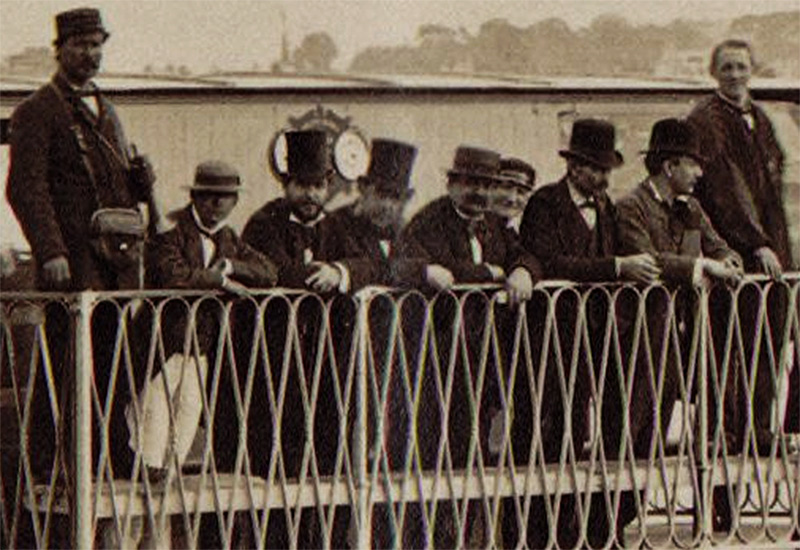I’m really surprised that nobody found this Quiz # 46 because it seemed easy enough.
Je suis vraiment très étonné que personne n’ai trouvé ce Quiz #46 car il me semblait assez facile.

A detail should help find the solution. Look at the man on the left… he wears a shoulder bag and in his left hand he holds a horn. This is the driver of the Saint-Malo harbour rolling bridge (Ille-et-Vilaine, France).
The Saint-Malo rolling bridge opened in 1873 to allow through, dry, port entrance of the city. It was in service until 1923. It was a raised platform running on rails installed at the bottom of the water. The set was powered by a steam engine located on the shores of the harbor and operating a trolley attached to the bottom of the chain and with the help of pulleys. The driver gave a horn blast for controlling the departure machinist located at the steam engine and another horn blast request stop.
Un détail aurait dû aider à trouver la solution. Regardez l’homme sur la gauche… il porte une sacoche en bandoulière et dans sa main gauche il tient une trompe. Il s’agit du conducteur du pont roulant de Saint-Malo (Ille-et-Vilaine, France).
Le pont roulant de Saint-Malo a été mis en service en 1873 pour permettre de traverser, au sec, l’entrée du port de la ville. Il a été en service jusqu’en 1923. Il s’agissait d’une plate forme surélevée roulant sur des rails posés au fond de l’eau. L’ensemble était mû par une machine à vapeur se trouvant sur une des rives du port et actionnant une chaîne attachée au bas du chariot et avec l’aide de poulies de renvoi. Le conducteur donnait un coup de trompe pour commander le départ au machiniste situé à la machine à vapeur et un autre coup de trompe pour demander l’arrêt.














